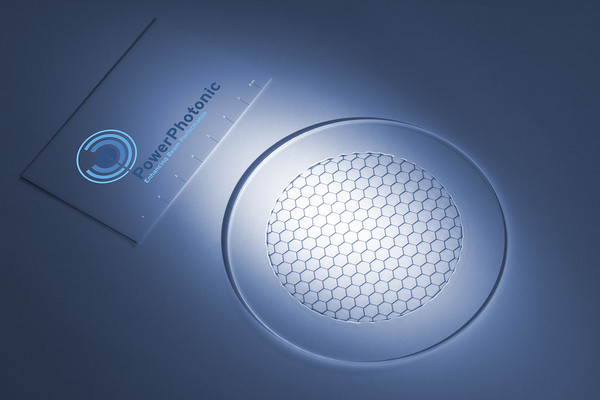PowerPhotonic, designer and manufacturer of freeform, wafer-scale optics, successfully launched its new Bessel Beam Generator at SPIE Sensors and Imaging in Amsterdam, last month. The beam shaper, designed to pair with existing demagnification optics, produces a flat-topped, laser beam profile with uniform light intensity over long distances in the optical axis. This profile is optimised for glass cleaving, transparent material processing and medical imaging.
Dr. Stephen Kidd, Head of Sales and Marketing at PowerPhotonic, said, “PowerPhotonic’s Bessel Beam Generator uses an advanced, refractive, freeform optical element, engineered to efficiently convert a high-power, single mode Gaussian beam into a Bessel beam. When focussed, the Bessel beam forms a spot of small lateral extension over a long range of axial distance. The spot has a flattened, uniform, profile in the propagation direction. It enables consistent processing and precise cutting of transparent materials. Although this is its prime application, Bessel beams also offer “self-healing” of free space communications links; enhanced cold atom trapping; and improved Optical Coherence Tomography (OCT).
“The Bessel Beam Generator delivers unmatched performance, compared to conventional axial beam solutions, which often suffer from having a significant variation of intensity along the optical axis. Its central lobe size to beam length, aspect ratio, is much higher; it allows high-power handling; it has wavelength flexibility; it enables increased processing speeds; and it delivers superior cleaving quality.”
The Bessel Beam Generator key specifications include an incident power shaping efficiency of over 95%; a flatness factor over 0.9; and an LIDT of > 0.5 /cm2.


